标签:where 目录 命名法 tde 一个 执行 重启 web eem
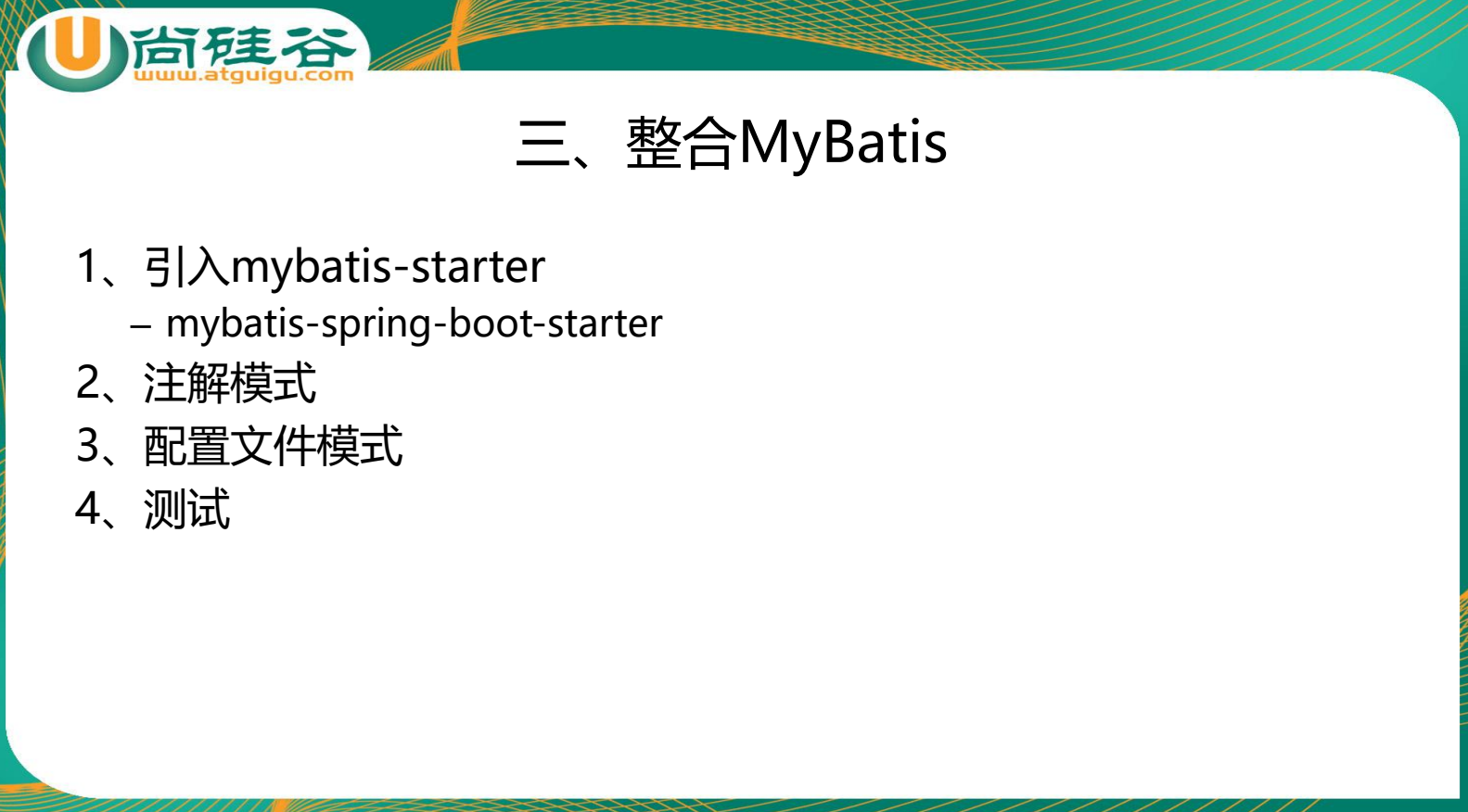
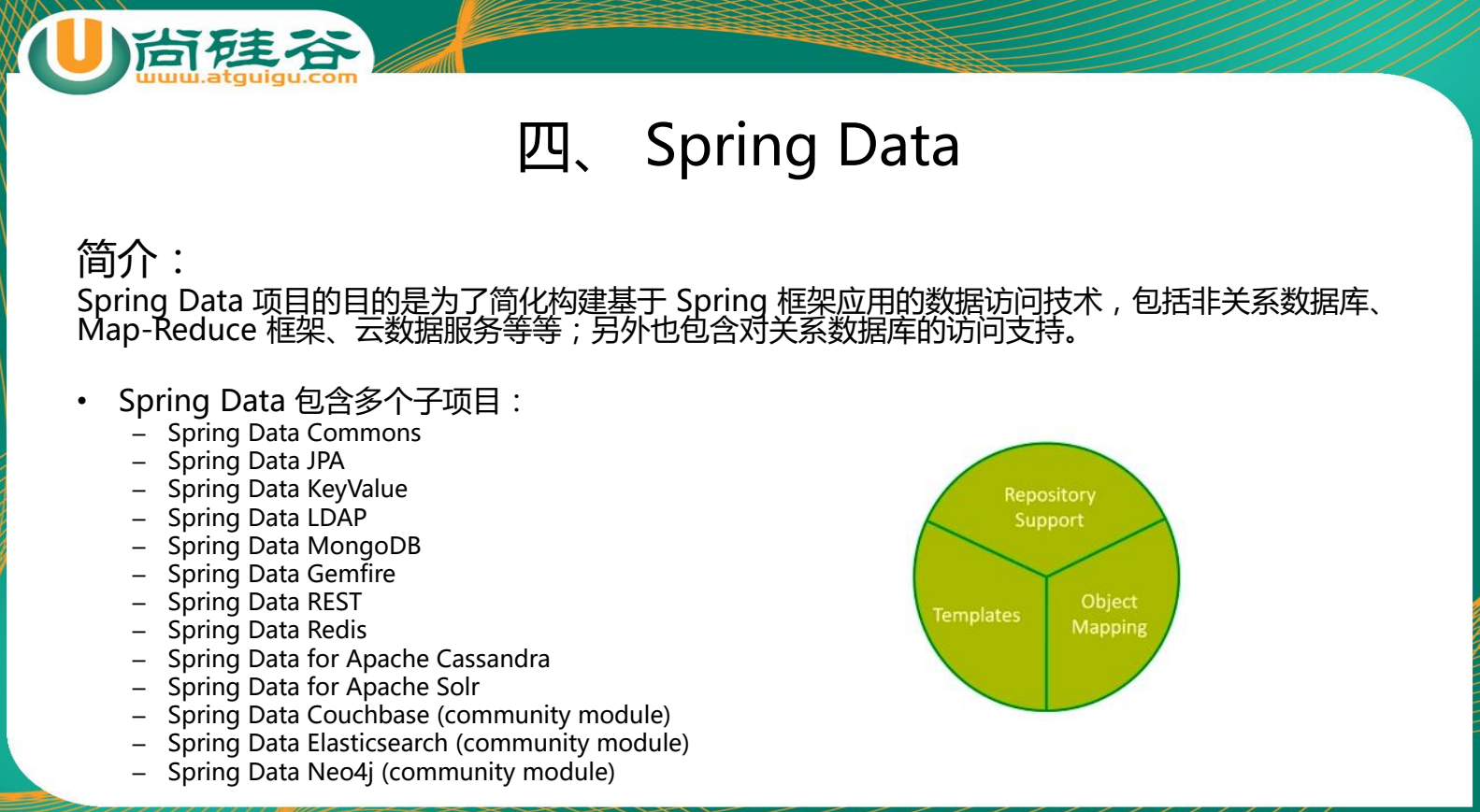
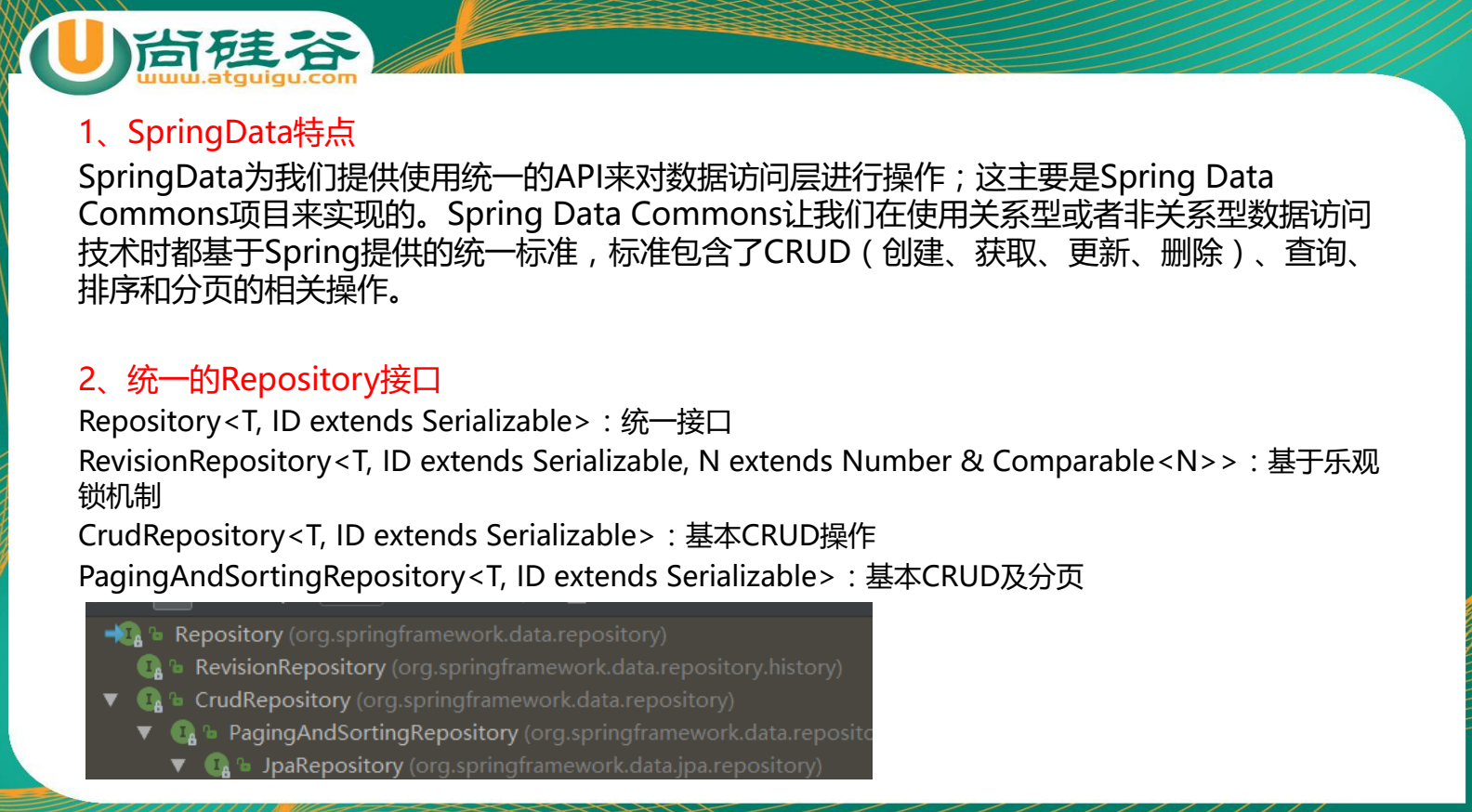
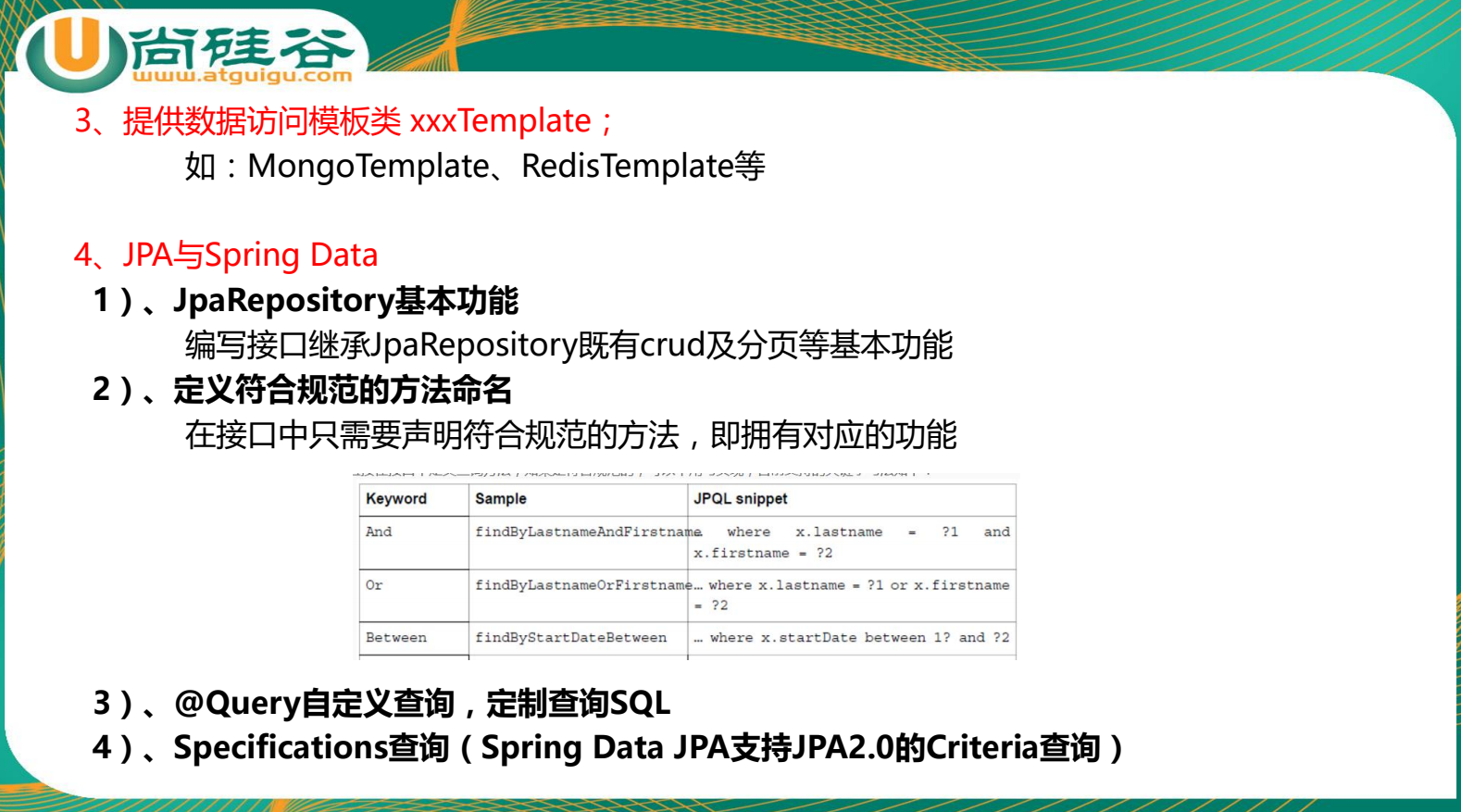
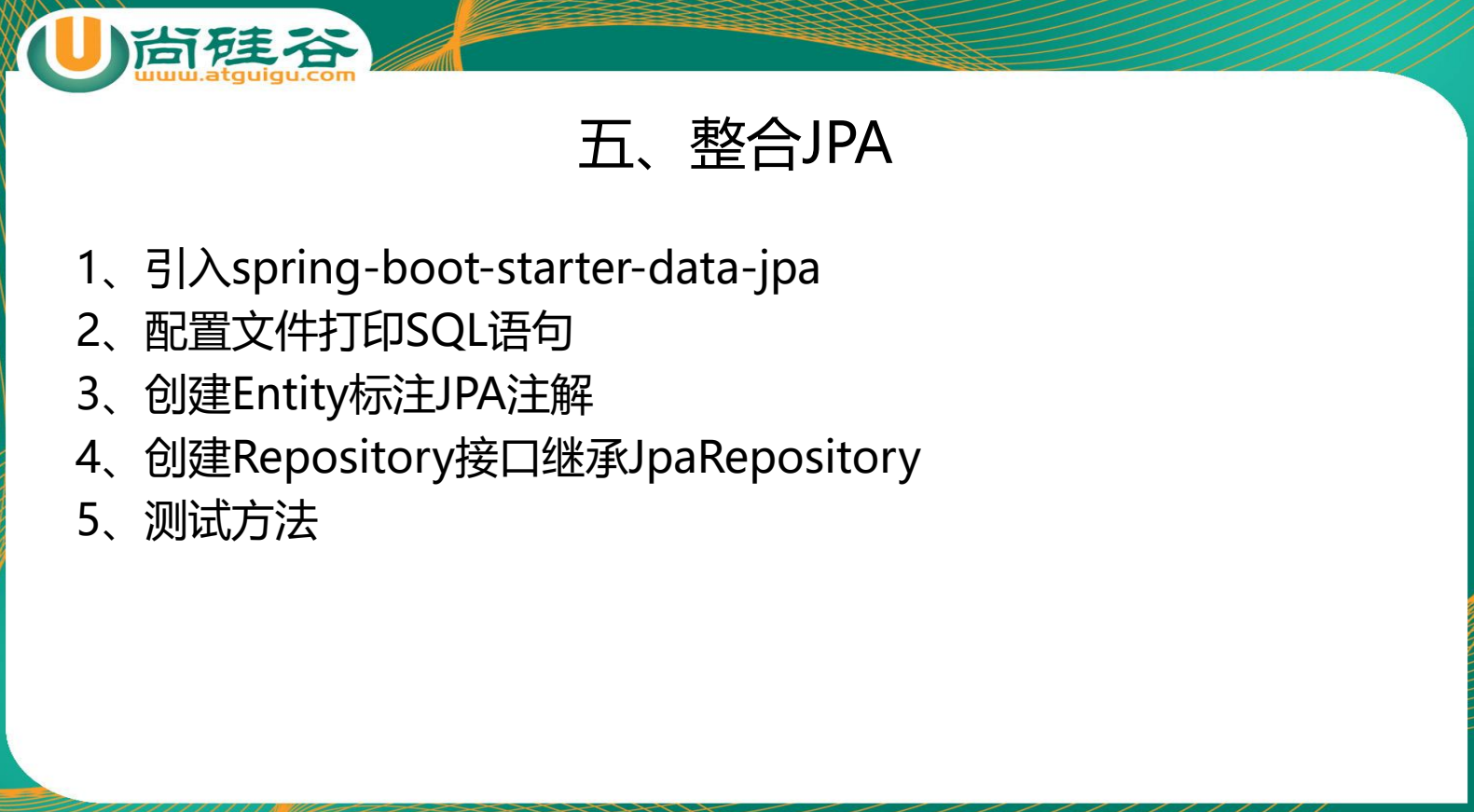
需要在pom文件当中添加下面的starts:
<!--这个不是springboot官方出品的,这个是mybatis官方出品的-->
<dependency>
<groupId>org.mybatis.spring.boot</groupId>
<artifactId>mybatis-spring-boot-starter</artifactId>
<version>1.3.1</version>
</dependency>
利用ide分析一下pom文件的依赖关系:
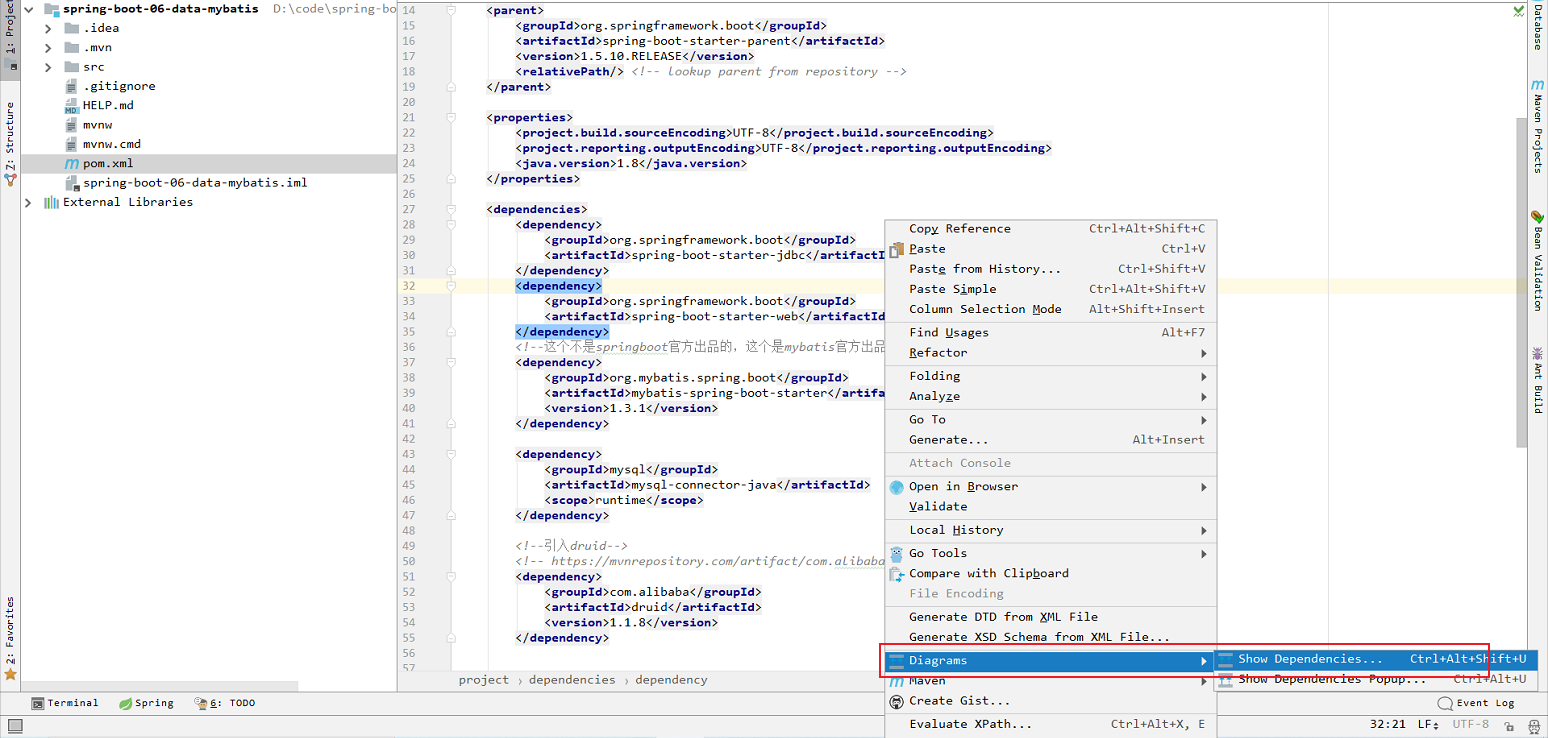
得到下面的依赖关系,这个就是mybatis官方出品的starters的依赖关系:

在使用mybatis之前,我们还使用druid数据源。
整合进来吧。
在pom文件当中添加:
<!--引入druid-->
<!-- https://mvnrepository.com/artifact/com.alibaba/druid -->
<dependency>
<groupId>com.alibaba</groupId>
<artifactId>druid</artifactId>
<version>1.1.8</version>
</dependency>
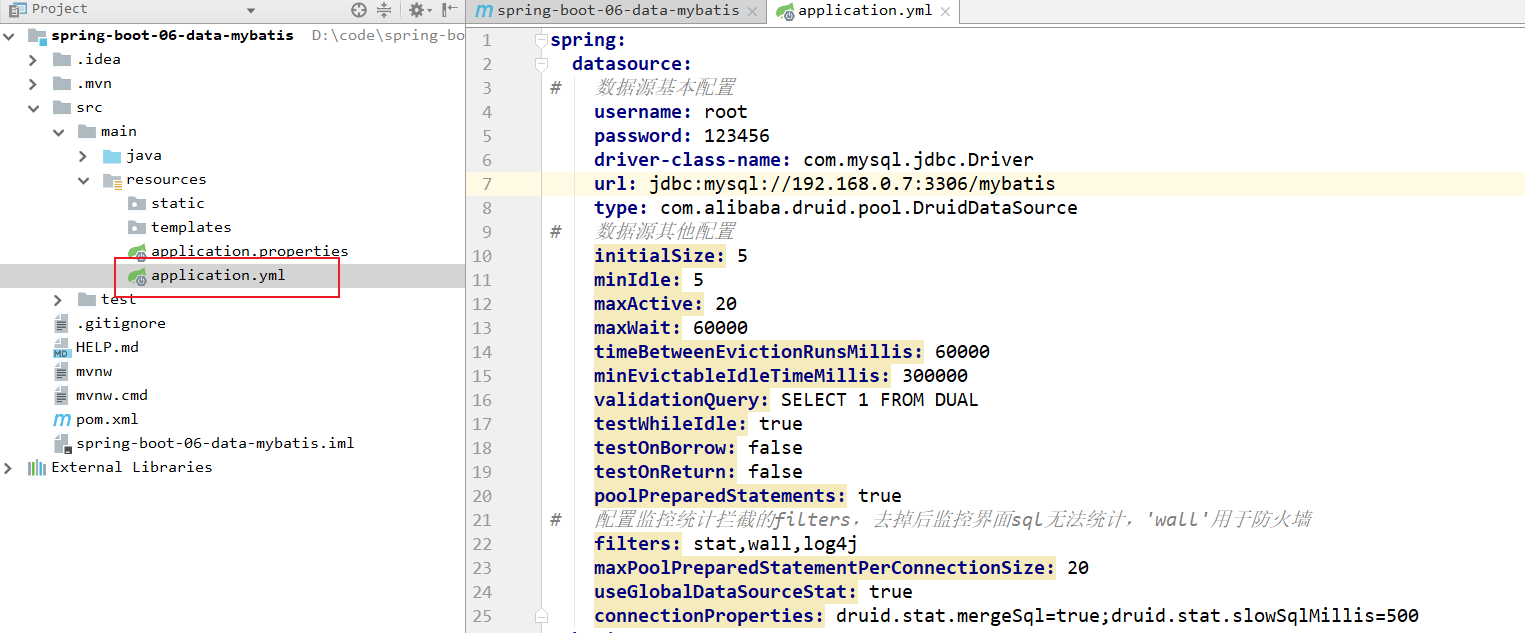
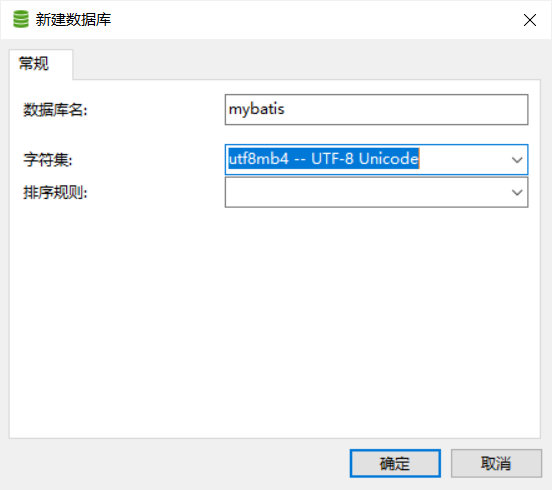
编写配置类,将数据源正确配置过来。
package com.atguigu.springboot.config;
import com.alibaba.druid.pool.DruidDataSource;
import com.alibaba.druid.support.http.StatViewServlet;
import com.alibaba.druid.support.http.WebStatFilter;
import org.springframework.boot.context.properties.ConfigurationProperties;
import org.springframework.boot.web.servlet.FilterRegistrationBean;
import org.springframework.boot.web.servlet.ServletRegistrationBean;
import org.springframework.context.annotation.Bean;
import org.springframework.context.annotation.Configuration;
import javax.sql.DataSource;
import java.util.Arrays;
import java.util.HashMap;
import java.util.Map;
@Configuration
public class DruidConfig {
@ConfigurationProperties(prefix = "spring.datasource")
@Bean
public DataSource druid(){
return new DruidDataSource();
}
//配置Druid的监控
//1、配置一个管理后台的Servlet
@Bean
public ServletRegistrationBean statViewServlet(){
ServletRegistrationBean bean = new ServletRegistrationBean(new StatViewServlet(), "/druid/*");
Map<String,String> initParams = new HashMap<>();
initParams.put("loginUsername","admin");
initParams.put("loginPassword","123456");
initParams.put("allow","");//默认就是允许所有访问
initParams.put("deny","192.168.15.21");
bean.setInitParameters(initParams);
return bean;
}
//2、配置一个web监控的filter
@Bean
public FilterRegistrationBean webStatFilter(){
FilterRegistrationBean bean = new FilterRegistrationBean();
bean.setFilter(new WebStatFilter());
Map<String,String> initParams = new HashMap<>();
initParams.put("exclusions","*.js,*.css,/druid/*");
bean.setInitParameters(initParams);
bean.setUrlPatterns(Arrays.asList("/*"));
return bean;
}
}
启动测试一下,看druid数据源的管理控制台,能不能够进来。

证明数据源的配置是没有什么问题的。
建表,使用雷丰阳提供的sql文件:

利用之前学过的知识,把sql文件放到resources当中的sql文件夹下面:

要想让程序启动的时候,就运行这两个sql文件,只需要在application.yaml当中配置schema相关的配置就可以了:

重新启动我们的程序,就发现在数据库当中已经创建了相关的表了:
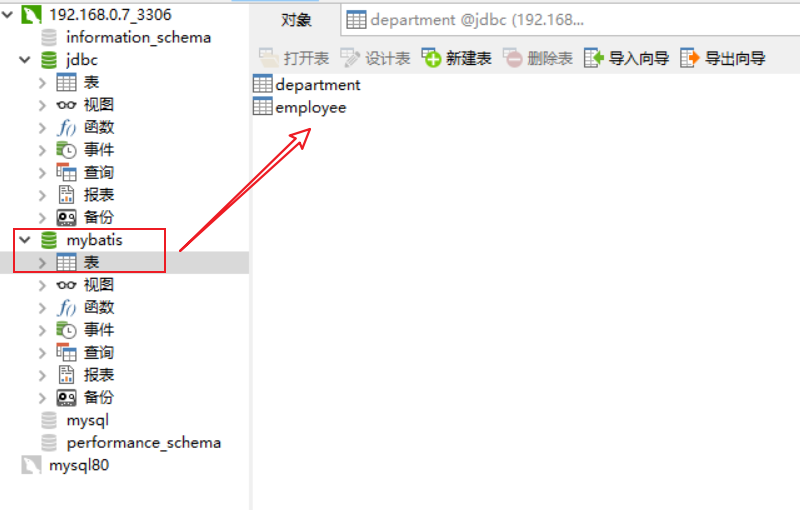
创建两个javabean,一个是Employee,一个是Department。
package com.atguigu.springboot.bean;
public class Employee {
private Integer id;
private String lastName;
private Integer gender;
private String email;
private Integer dId;
public Integer getId() {
return id;
}
public void setId(Integer id) {
this.id = id;
}
public String getLastName() {
return lastName;
}
public void setLastName(String lastName) {
this.lastName = lastName;
}
public Integer getGender() {
return gender;
}
public void setGender(Integer gender) {
this.gender = gender;
}
public String getEmail() {
return email;
}
public void setEmail(String email) {
this.email = email;
}
public Integer getdId() {
return dId;
}
public void setdId(Integer dId) {
this.dId = dId;
}
}
package com.atguigu.springboot.bean;
public class Department {
private Integer id;
private String departmentName;
public Integer getId() {
return id;
}
public void setId(Integer id) {
this.id = id;
}
public String getDepartmentName() {
return departmentName;
}
public void setDepartmentName(String departmentName) {
this.departmentName = departmentName;
}
}
写一个mapper,然后将sql语句,都写在注解上,按照注解的方式来操作数据库,如下图所示:
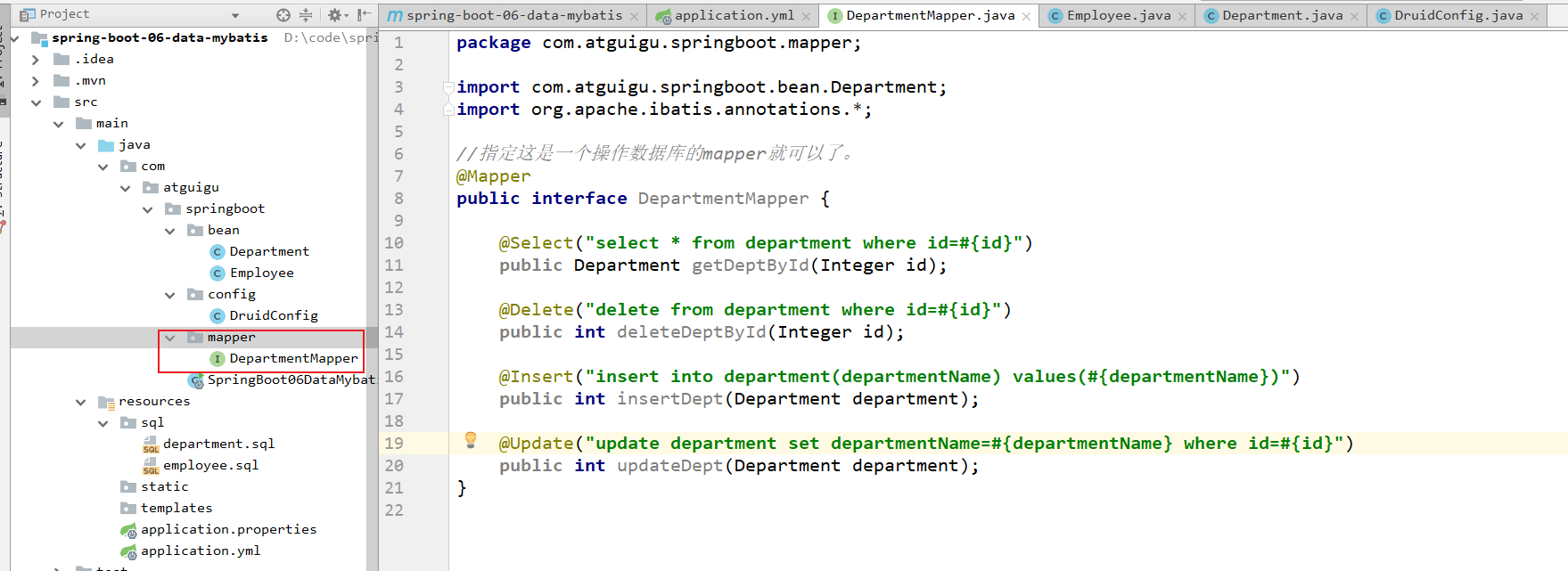
package com.atguigu.springboot.mapper;
import com.atguigu.springboot.bean.Department;
import org.apache.ibatis.annotations.*;
//指定这是一个操作数据库的mapper就可以了。
@Mapper
public interface DepartmentMapper {
@Select("select * from department where id=#{id}")
public Department getDeptById(Integer id);
@Delete("delete from department where id=#{id}")
public int deleteDeptById(Integer id);
@Insert("insert into department(departmentName) values(#{departmentName})")
public int insertDept(Department department);
@Update("update department set departmentName=#{departmentName} where id=#{id}")
public int updateDept(Department department);
}
写一个controller测试一下:
package com.atguigu.springboot.controller;
import com.atguigu.springboot.bean.Department;
import com.atguigu.springboot.mapper.DepartmentMapper;
import org.springframework.beans.factory.annotation.Autowired;
import org.springframework.web.bind.annotation.GetMapping;
import org.springframework.web.bind.annotation.PathVariable;
import org.springframework.web.bind.annotation.RestController;
@RestController
public class DeptController {
@Autowired
DepartmentMapper departmentMapper;
@GetMapping("/dept/{id}")
public Department getDepartment(@PathVariable("id") Integer id){
return departmentMapper.getDeptById(id);
}
@GetMapping("/dept")
public Department insertDept(Department department){
departmentMapper.insertDept(department);
return department;
}
}
运行程序之后,然后插入一条数据:
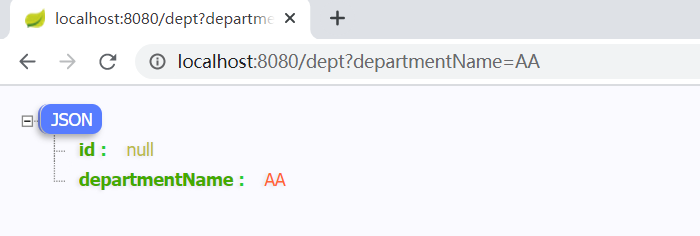
看一下数据库当中的内容:
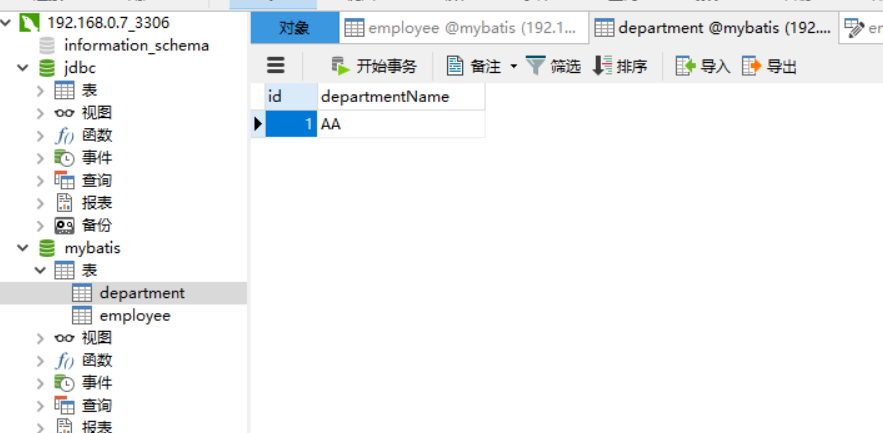
然后再执行查询的操作:
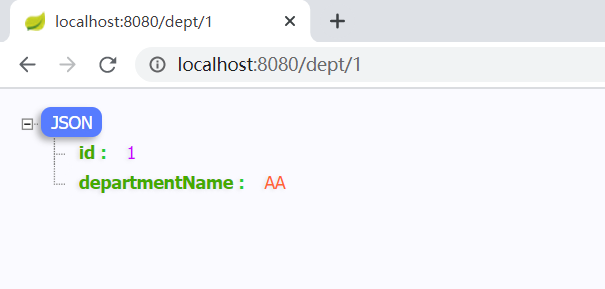
如果我们想要在springboot当中使用mybatis,只需要引入mybatis,然后写一个mapper,用@Mapper注解加入进来就可以了。
非常简单的。
我们不需要做任何配置,都是自动配置好了的。
我们可以通过ctrl+n来搜索:MybatisAutoConfiguration。
在这个里面都自动配置好了,很多的东西。
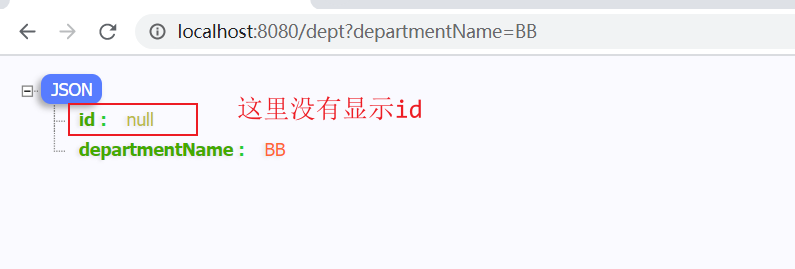

重新运行程序,然后测试:
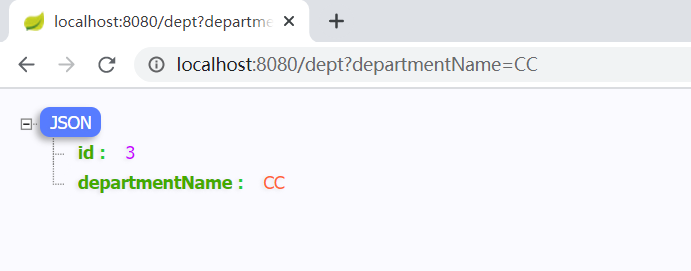
成功解决这个问题。
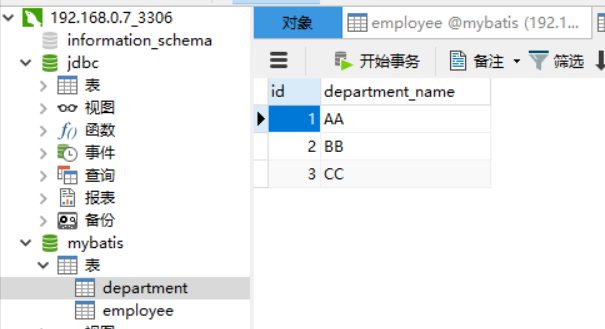
如果现在把数据库表当中的departmentName字段名字,修改成为department_name。
然后把程序当中的mapper接口当中 的表的列名,也都修改正确,修改成为下面的样子:
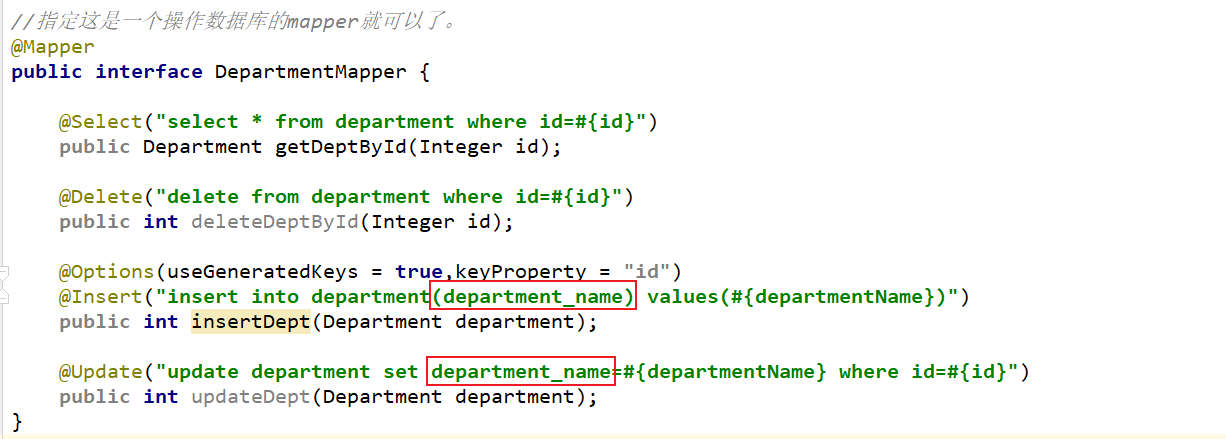
重启程序,然后使用查询测试一下:
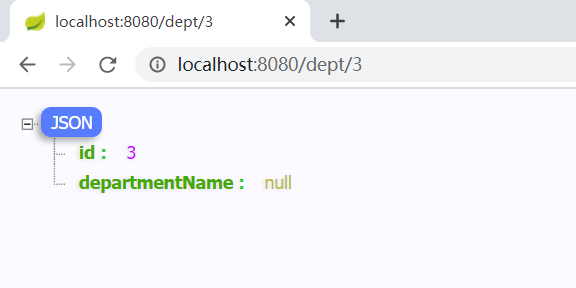
departmentName就已经查不出来了。
在这种情况下是:javabean的属性名字是叫做departmentName,但是数据库表的列名是叫做department_name。
以前有配置文件的情况下,我们可以开启驼峰命名法来兼容这个问题。
没有配置文件的时候,我们怎么做呢?
我们可以查看mybatis的autoconfiguration当中是怎么写的。
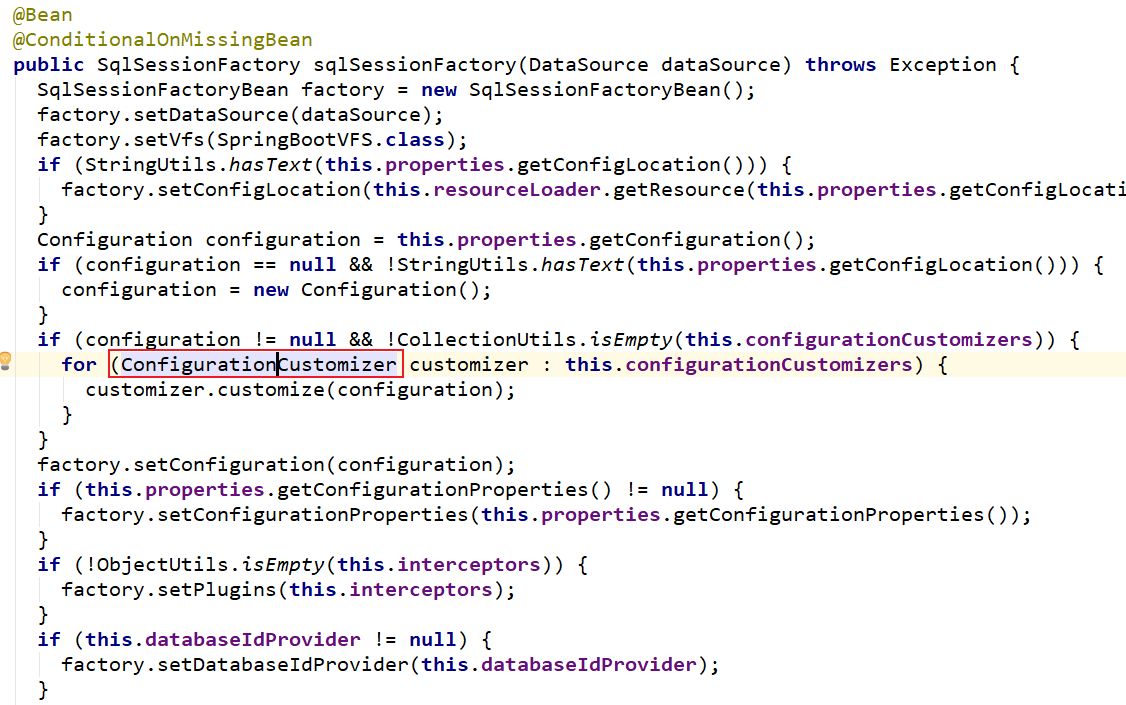
我们发现在MybatisAutoConfiguration当中给IOC容器注入SqlSessionFactory这个bean的时候,里面有一个ConfigurationCustomizer。
在没有配置文件的时候,我们写一个mybatis的配置类,用一下这个ConfigurationCustomizer。

重启我们的程序,然后再次进行测试。

问题解决。
使用自定义mybatis的配置规则。
给容器当中添加一个:ConfigurationCustomizer,就可以了。
如果我们的mapper特别多,我们给每个mapper文件都加上@Mapper注解,好麻烦哦。
我们可以这样做,在主程序上面添加@MapperScan这样的注解:

实际开发当中,我们也经常使用配置文件的方式。
我们需要一个mybatis的全局配置文件。
每一个mapper,我们写一个sql映射文件。
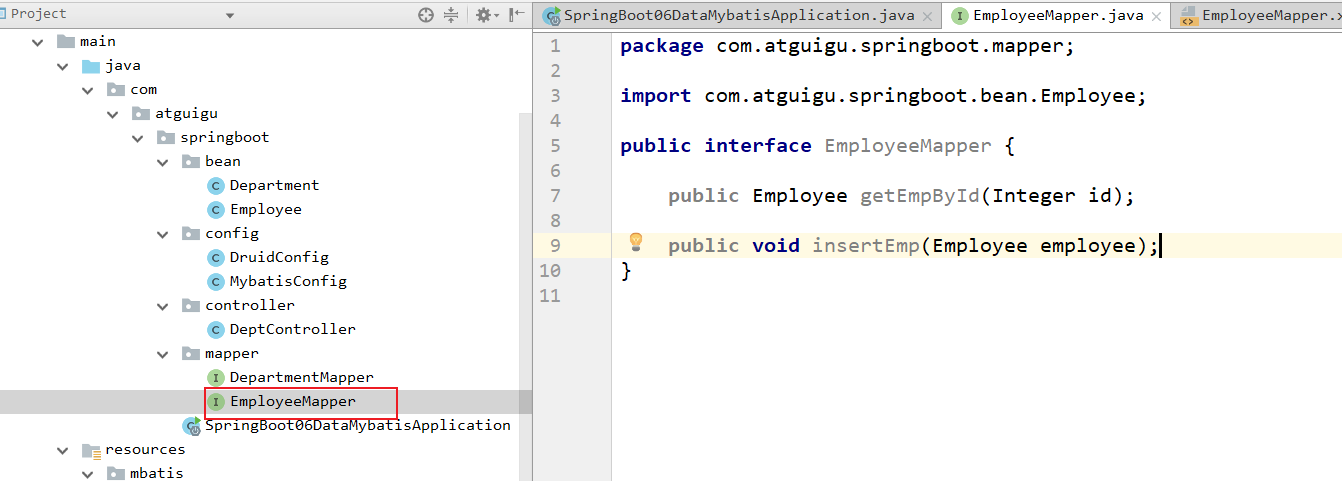

创建mybatis的全局配置文件mybatis-config.xml,然后创建mapper的sql映射文件:EmployeeMapper.xml。
这些配置文件怎么写呢?
我们可以去查阅mybatis的官方文档。
mybatis源代码都是托管在了github上面的,我们可以去github上面查看mybatis的官方文档的:
https://mybatis.org/mybatis-3/getting-started.html。
下面的这个部分,就是全局配置文件的内容:
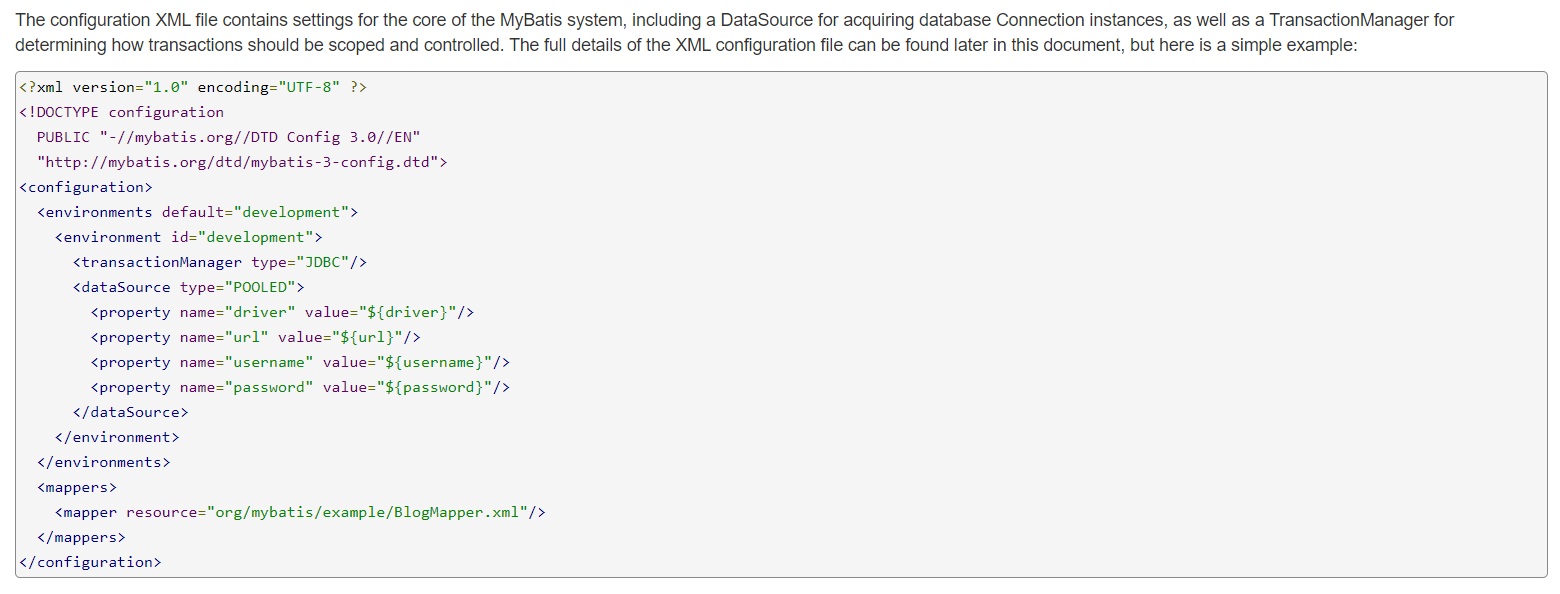
<?xml version="1.0" encoding="UTF-8" ?>
<!DOCTYPE configuration
PUBLIC "-//mybatis.org//DTD Config 3.0//EN"
"http://mybatis.org/dtd/mybatis-3-config.dtd">
<configuration>
<environments default="development">
<environment id="development">
<transactionManager type="JDBC"/>
<dataSource type="POOLED">
<property name="driver" value="${driver}"/>
<property name="url" value="${url}"/>
<property name="username" value="${username}"/>
<property name="password" value="${password}"/>
</dataSource>
</environment>
</environments>
<mappers>
<mapper resource="org/mybatis/example/BlogMapper.xml"/>
</mappers>
</configuration>
下面的这个部分,就是sql映射文件的内容:

<?xml version="1.0" encoding="UTF-8" ?>
<!DOCTYPE mapper
PUBLIC "-//mybatis.org//DTD Mapper 3.0//EN"
"http://mybatis.org/dtd/mybatis-3-mapper.dtd">
<mapper namespace="org.mybatis.example.BlogMapper">
<select id="selectBlog" resultType="Blog">
select * from Blog where id = #{id}
</select>
</mapper>
<?xml version="1.0" encoding="UTF-8" ?>
<!DOCTYPE mapper
PUBLIC "-//mybatis.org//DTD Mapper 3.0//EN"
"http://mybatis.org/dtd/mybatis-3-mapper.dtd">
<mapper namespace="com.atguigu.springboot.mapper.EmployeeMapper">
<!--
public Employee getEmpById(Integer id);
public void insertEmp(Employee employee);
-->
<select id="getEmpById" resultType="com.atguigu.springboot.bean.Employee">
SELECT * FROM employee WHERE id=#{id}
</select>
<insert id="insertEmp">
INSERT INTO employee(lastName,email,gender,d_id) VALUES (#{lastName},#{email},#{gender},#{dId})
</insert>
</mapper>

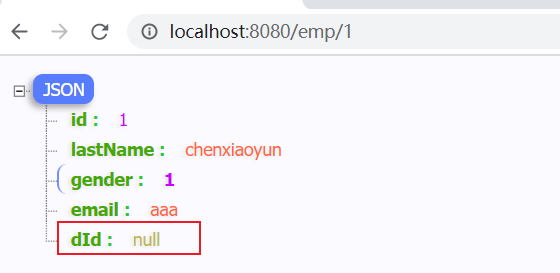
上面dId没有值,是因为,我们的全局配置文件当中,没有开启驼峰命名法:
我们在全局文件当中进行如下的配置:
<?xml version="1.0" encoding="UTF-8" ?>
<!DOCTYPE configuration
PUBLIC "-//mybatis.org//DTD Config 3.0//EN"
"http://mybatis.org/dtd/mybatis-3-config.dtd">
<configuration>
<settings>
<setting name="mapUnderscoreToCamelCase" value="true"></setting>
</settings>
</configuration>
然后重新测试一下:
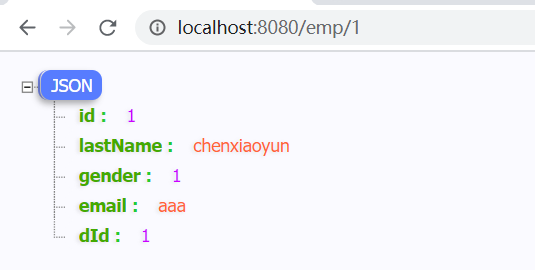
在springboot当中,我们是可以复合使用注解版和配置版的。配置版的核心步骤,就是在application.yml当中指定mybatis的全局配置文件和sql映射文件。
标签:where 目录 命名法 tde 一个 执行 重启 web eem
原文地址:https://www.cnblogs.com/gnuzsx/p/14725869.html